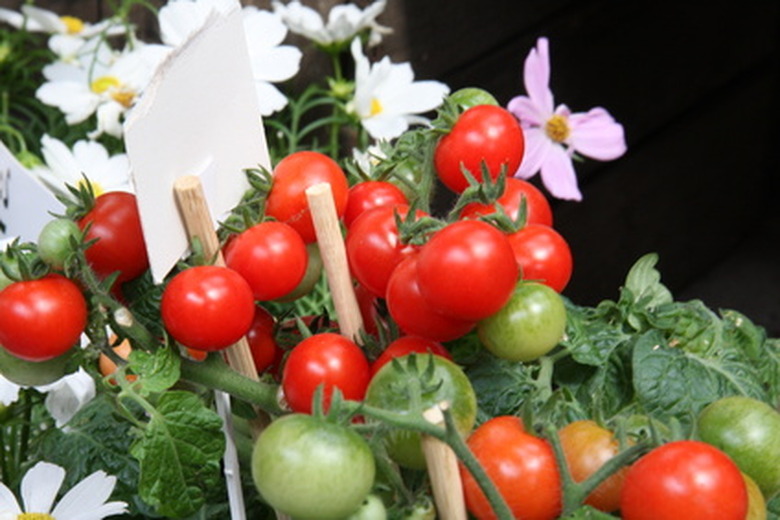The Uses Of Loam Soil
Loam soil is considered the ideal planting medium for growing a wide variety of plants. Heavy clay soil has poor drainage and can often be hard to work, while sandy soils fail to properly retain water and nutrients that plants require for growth. Loam soil is a fairly equal combination of three soil types: sand, silt and clay. Loam drains well, yet holds moisture and nutrients needed for growing healthy plants. The medium-textured soil also allows air to circulate around plant roots while providing protection from diseases often caused by other types of poorly drained compacted soils.
Raising Crops
Loam soil provides vegetable plants with soil conditions needed to produce abundant crops during the growing season. Choose a vegetable planting location that receives six to eight hours of daily sunlight. Amend clay or sandy soil prior to vegetable planting with soil conditioners like compost, manure, sawdust, peat moss or coarse sand. Add 3 to 4 inches of organic materials and 1 to 2 inches of coarse sand to the soil surface, then mix in with a garden tiller or spade 8 to 10 inches into soil. To prevent nutrient deficiency caused by decomposing organic matter, add nitrogen when necessary.
- Loam soil is considered the ideal planting medium for growing a wide variety of plants.
- The medium-textured soil also allows air to circulate around plant roots while providing protection from diseases often caused by other types of poorly drained compacted soils.
Planting Trees
Young trees prefer being grown in loam because the texture of the soil allows roots to spread quickly, retain moisture and obtain nutrients needed to grow. Select a planting location with the proper daily light requirements for your tree. Dig a hole two to three times larger than the tree root ball, then mix conditioners into extracted soil to amend clay or sandy soil to a loamy consistency. Backfill with the new soil mixture, keeping trees at their original planting depth. If amended sandy soil does not hold new transplanted trees well, add a layer of heavier topsoil and mulch to the surface.
Growing Flowers
Many types of flowers grow quickly and thrive in loamy soil conditions. Pick garden sites that provide full sun to partially shaded conditions as required by your plants. Adjust heavy clay or sandy soil with conditioners as necessary using a garden tiller or hoe. Plant annual or perennial flower transplants into amended soil and add a 2-inch layer of organic mulch to the surface around the plants. Fertilize with an all-purpose, water-soluble fertilizer every seven to 10 days throughout the warm spring and summer months to produce the greatest amount of colorful flowers.
- Young trees prefer being grown in loam because the texture of the soil allows roots to spread quickly, retain moisture and obtain nutrients needed to grow.
- Dig a hole two to three times larger than the tree root ball, then mix conditioners into extracted soil to amend clay or sandy soil to a loamy consistency.
